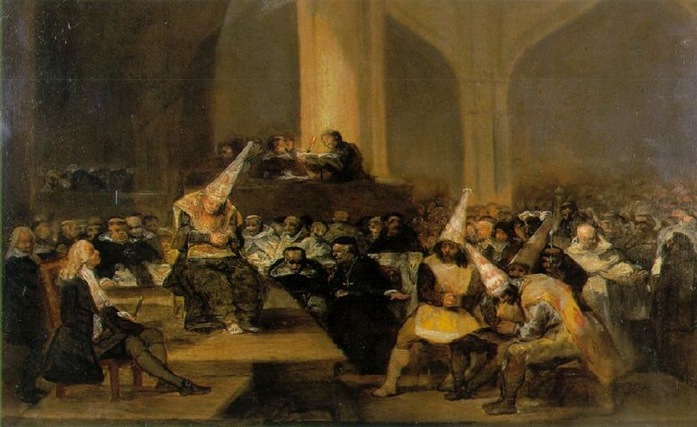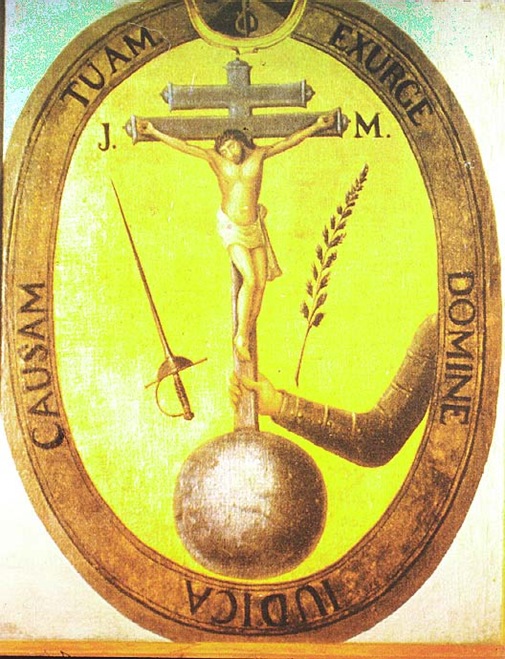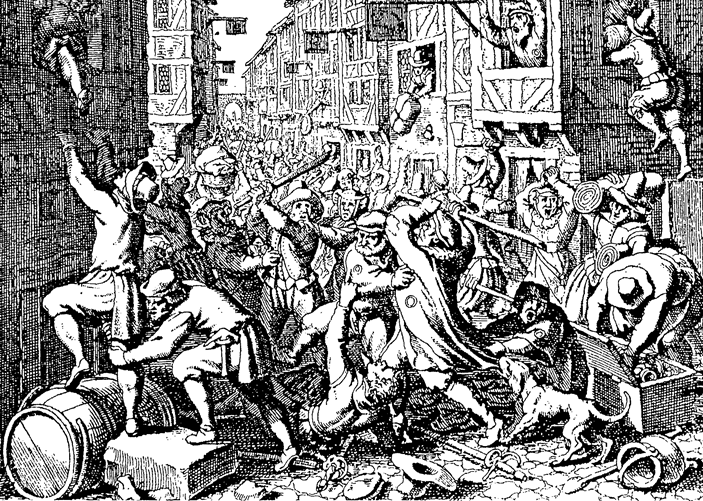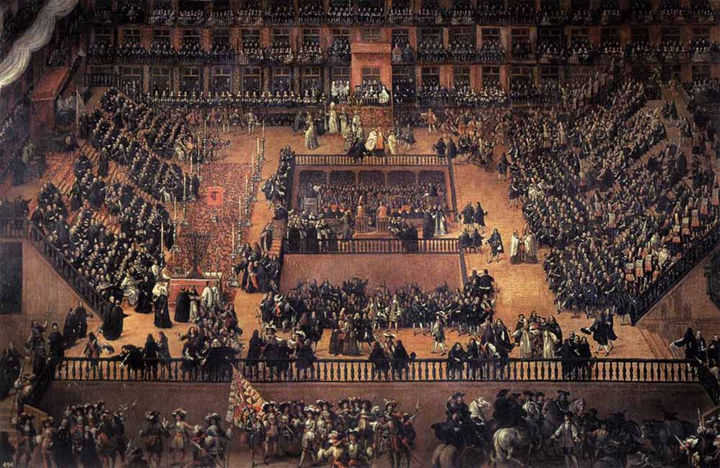Ioannis Auxentiou
February 3, 2014

There is, probably, no other institution in the medieval world that has been slandered as much, as the Holy Inquisition. Enlighteners, Protestants, and Jews managed for a long time to tarnish this very important institution in every possible way. Even in our own day, Hollywood continues to produce movies that reinforce this view.
But, as the saying goes, “lies have small feet.” Modern historical research has proved that a lot of the so-called “truths” that were widely believed about the actions of this institution were just myths created by modernity.
Important in this act of historical revision were the works of historians: Henry A. Kamen, a member of the Royal Historical Society, Edward Peters, professor at the University of Pennsylvania, Bartolomé Bennassar, professor at the University of Toulouse, and many more.
In the short article that follows, the reader will have the chance to understand the causes behind the slanders against the Holy Inquisition, but also to learn about some parts of its activity that are unknown to a wider audience.

The Seal of the Spanish Holy Inquisition
To defend and justify the Holy Inquisition is the exact opposite of Political Correctness. But as I have nothing to do with PC, I am happy to present the real history of this medieval institution.
Even the biggest critic of the Holy Inquisition, the American Quaker historian Henry C. Lea (1825 – 1909), was forced to admit that “The aim of the Holy Inquisition was the same as the aim of Civilization.” Indeed, even the most fanatical anti-Catholics, agree that the Holy Inquisition effectively countered:
- the suicidal beliefs of the Cathars, who were against childbirth
- the vandalism of the Anabaptists, who believed in destroying all art works
- the murderous tendencies of Fra Dolcino, who wished to kill every sinner
- the “Brothers of the Free Spirit,” who wished to remove from public office everyone who was not “enlightened”
All these victories for sanity were due to the Holy Inquisition. Today, no-one would be crazy enough to believe that God created some just to damn them for eternity. But, that was for centuries, the protestant dogma, and the cause of terrible wars that bled Europe. It is due to the Holy Inquisition, that Spain wasn’t touched by such have religious wars.
We should also remember that the famed University of Salamanca (one of the best and oldest in Europe), was created by an Inquisitor, and that the conversation about the rights of American Indians took place under the aegis of the Spanish Holy Inquisition. In this, we could even say that the Holy Inquisition was one of sources of modern day international human rights.
To understand how the Spanish Inquisition developed we have to understand Spanish history. In 1492 that country had just completed its national Reconquista, after eight centuries of occupation of a large part of its territory by the Moors. It thus had two really powerful national minorities in it: one of the biggest Jewish communities in the world as well as the Muslims. The first group had managed to concentrate a major part of the financial power in its hands, while the second, did not hide its dreams of vengeance.
The “Marranos” and the “Moriscos” were two in-between categories, made up of pseudo-Christians, meaning Jews and Muslims, who had – only in name – been converted to Christianity. Many of these had managed to occupy high offices in the Spanish hierarchy, both secular and ecclesiastic. This situation was full of danger, threatening the submission of the country to those hostile minorities, as well as causing intense friction and clashes with the real Christians, who saw that those pseudo-Christians were not only using their networks to control positions and offices, but were also taking economic advantage of them. Because of this, the country was in danger of civil war.

So the leadership of Spain thought it essential to intervene so that ne cives ad arma veniant (the citizens would not take arms). It therefore instituted the Holy Inquisition, and, in order for it to be impartial, the first High Inquisitor was Tomás de Torquemada, a man from a “converso” background (genuine converts to Christianity). In the case of Torquemada’s family, the conversion had been from Judaism. The main aim of the Holy Inquisition was to clarify things, making Jews declare that they are Jews and Muslims to declare that they are Muslims. In other words, no one bothered with the Jews that remained Jewish and the same went for Muslims.
Much has been written, said, and implied about the torture methods of the Holy Inquisition. There is no historian, worthy of that title, who does not recognize the fact that the Holy Inquisition was a rather mild and fair court, that it respected the procedures and was honestly interested in the salvation of the guilty.
As far as tortures go, they were rarely used, and were accompanied by medical controls, and only for the purpose of proving guilt. In any case, they were not overly harsh by the standards of the day. The accused was lifted high off the ground with ropes and left to fall down – three times maximum. If he could withstand the pain, the procedure stopped there. When the police arrest a criminal today, it is not unusual for the apprehended individual to be beaten and restrained.
Let us consider the prisons of the Holy Inquisition in Rome. The Italian historian Luigi Firpo mentions that there were a change of sheets twice per week, beer for those who could not drink wine, leave for the prisoners to see their parents, for work, and for medical care. The sentence of “continuous imprisonment,” in the language of the inquisitors, actually meant only three years in prison.
As far as France is concerned, it is known why the Holy Inquisition was established in that country. This was due to the heresy of the Cathars, which had managed to gain control of whole provinces, and had even princes convert to it. In short, the real reason for the existence of the Holy Inquisition in Europe was the to counter that era’s version of “Trotskyists,” meaning Gnostic movements and crypto-Jews, that were applying, then as now, their favorite technique of Entryism.

Before we finish, a small mention of the Galileo Galilei case. The Catholic Church supported the Aristotelian – Ptolemaic earth-centered theory for the movement of the celestial bodies, while Gallilei believed in the Copernican heliocentric theory. The Holy Inquisition, did not call Gallilei to condemn him, but asked him to prove his theory, and if he did the church would accept it. What happened, and was kept in silence for many years, was that Gallilei could not give irresistible scientific proof. Today every scientist knows that. This is not the right place to present the whole case. It is enough to read what Arthur Koestler, a Jew himself and thus no fan of the Catholic Church, writes about Gallilei:
“There is no doubt that the theory of tides by Gallilei was based on an unconscious fraud. But there is no doubt that the theory of tides, by Gallilei was a deliberate effort to confuse and deceive… As we have seen, academics are always prone to manias and obsessions and tend to falsify details. But fraudsters like Gallilei are rare in the chronicles of science…”
(Arthur Koestler, The Sleepwalkers, New York, 1959).
Would you like to know the penalty that the court of the Holy Inquisition forced on Gallilei? Five months of detainment in the tower of the Grand Duke of Tuscany Francesco Niccolini and the recitation of some religious psalms. Finally there was a “deal” and the psalms were recited by his daughter Maria Celeste. A bit later, after Gallilei disobeyed the orders to not spread his unproven theories, they were forced to isolate him in his villa, (known as “The Jewel”) in which he lived with every comfort.
Another big lie is the famous phrase that Gallilei supposedly used after his conviction: “Yet, it moves”. This phrase was not used by Gallilei, but was invented by the author Giussepe Baretti, who invented the incident for the purposes of anti-Catholic propaganda for the British public in an anthology published in London in 1757.
The End of the Cathars
But somebody is sure to ask: Did the Holy Inquisition go to no extremes? Did it not abuse its power at all? Of course it did, as is the case in any human activity, whether religious, political or military. The death penalties that the Holy Inquisition declared (in reality the Holy Inquisition decided if someone was guilty or not, the death penalty was an issue of the state and not of the Church) were limited to serious offences and anyway were quite less than the number of death penalties that the civic courts declared in that time.
History should be judged on the same basis as pharmaceuticals. A medicine is evaluated by comparing its healing abilities against its negative side effects. If we judge the Holy Inquisition by the same rule, then we will have to admit that if its spirit had been kept throughout Europe steadily and for a longer time, then maybe today we might not be living in our present age of darkness. In other words we would be free of Puritanism and thus Capitalism, and from WASPs like G.W. Bush, freemasonry, as well as every leftist ideology.
This article was originally published in Greek on the Theodotus blog. It was translated into English by Dimitrios Papageorgiou for Alternative Right.
